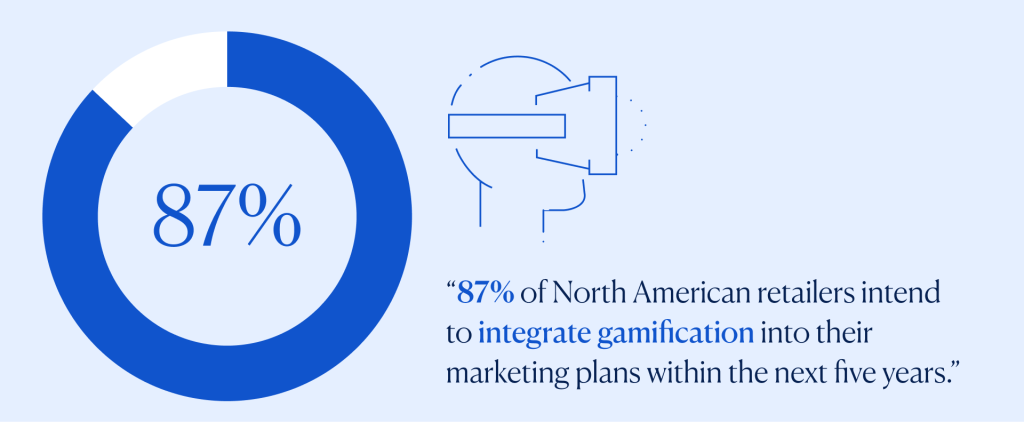
2024 will be a year of change for many industries, but none quite as much as the retail sector.
With artificial intelligence changing the game, continued cautious consumer spending, and many companies embarking on rounds of layoffs again, the stage is set for an interesting year.
At Stanton Chase, we’re committed to your long-term prosperity. That’s why we’re eager to share the retail sector trends that executives need to watch out for.
1. Preparing for Gen Alpha
Usually, on these lists, the first group people discuss is Generation Z, or “Zoomers,” as they’re sometimes affectionately called—that’s the cohort born between 1997 and 2012. In other words, they’re currently between 12 and 26 years old. However, few are talking about Generation Alpha, the group following Gen Z, born between 2013 and 2025 (which means they’re 11 years old or haven’t been born yet).
But if you’re committed to your company’s success over the next decade, it’s important to note that Gen Alpha, along with Gen Z, will soon be your main target market. There are over 2.8 million Generation Alpha individuals born worldwide every week, and their numbers exceed 2.2 billion.

With its size and growing influence, Generation Alpha is set to bring considerable changes to the retail sector.
Now, of course, Gen Alpha aren’t making purchases themselves, but that doesn’t mean their interests, desires, and fashion trends aren’t already influencing consumer behavior. In fact, family shopping dynamics are evolving, with parents of Gen Alpha kids tailoring their spending to the values and interests of their children—a trend likely to grow as Alphas age.
2. Artificial Intelligence (AI) and Machine Learning (ML)
In 2024, if you don’t want to be among those CEOs uncertain about your company’s future, it’s time to turn to AI for a boost.
Retailers embracing AI and machine learning have experienced a reported 2.3 times growth in sales and are 2.5 times more likely to increase the size of their customer base, with 69% of retailers reporting an increase in annual revenue attributed to AI adoption.

But how is the retail industry using AI in 2024? Well, advanced generative AI is particularly good at generating new product designs, creating personalized marketing content, and offering personalized recommendations to customers. Retailers can also use customer data and predictive analytics via AI to anticipate store traffic patterns.
Although the age of robots has not quite arrived, and there’s no immediate concern of AI taking over the world, the AI revolution is definitely taking root in the retail world. Those who embrace it may see their efficiency and profits soar.
3. Augmented Reality (AR), Virtual Reality (VR), and the Metaverse
If you’ve been out of the loop, the metaverse is booming (again), especially the gaming side of it. We’re expecting this area to grow by 38% every year until 2027, which shows just how much people are getting into this kind of tech. Retailers are seeing this as a chance to create shopping experiences like never before.
In 2024, more and more retailers will use virtual reality to change the way we buy products and services. Take a look at what Louis Vuitton did—they made a game in the metaverse where people could nab NFTs and connect with their brand. It’s a fun, different way to shop.
This year, it’s time to think about how you’ll mix the metaverse with your business to make things more fun for your customers. Why not set up a virtual showroom? Or put some AR mirrors in your real-life stores to cut down on the need for fitting rooms? These things can give customers a peek at how products fit into their life before they buy.

4. Growth of Retail as a Service (RaaS)
Even though online shopping is huge, 83.4% of retail sales are still expected to happen in physical stores in 2024. And that’s why this year will see continued growth when it comes to Retail as a Service (RaaS).
If you haven’t heard of it, RaaS lets brands sell their products in a physical store without having to lease a location and employ personnel to run it. Let’s say you sell sneakers. With RaaS, you can get them into a store without worrying about the finer details like leases and checkout lines. You just supply the sneakers themselves and pay the RaaS organization for its trouble.
The cool part about RaaS is how it lets lots of brands share the same retail space. That means making the most of the shopping area—and it’s better for the planet since brands pool their resources.
In 2024, RaaS is a smart move for brands with a large online presence but that have not cemented a large physical presence yet. It’s a clever way to cash in on all the consumers who still love in-store shopping sprees.

5. Social Commerce Evolution
TikTok, Instagram, Twitter… The list of social media platforms is ever-growing, and as younger generations shift from Facebook to shorter, visually driven platforms like TikTok, the way we market products is evolving.
The old strategy of paying to place ads in social media feeds is becoming outdated when it comes to retail offerings. In 2024, influencers are the new key to spreading the word. After all, a top influencer’s reach and… well… influence often surpasses that of a standard paid ad lost in the shuffle of social media.
And all of this is not just speculation; this mode of selling is exploding. In the US alone, it’s estimated that 36% of internet users will partake in social commerce.
Influencer marketing isn’t the only tactic in social commerce, but in 2024, it’s expected to be the most dominant and successful. We’ve watched it work wonders for other brands. Take Swisspers, a brand by U.S. Cotton, as an example. They tapped into beauty bloggers to promote their makeup removal products, encouraging them and their followers to post “naked” (makeup-free) selfies to demonstrate the product’s effectiveness.
In 2024, retailers should be revamping their marketing strategies—and maybe teaming up with an influencer or two.

6. Subscription Model Innovation
The world is all about subscriptions now, from our games, and shows to our meals and outfits, even our coffee or juice in some cases. I’m certain that in 2024, even more retailers will jump on this bandwagon. Subscription businesses are booming, growing at a rate of 60% over the past several years—a rate that’s way ahead of the average 10% industry growth. It’s a no-brainer for retailers looking to grab a slice of this pie.
So, how does a retailer create a subscription model? Well, if you look at others who’ve done it, the big trend is “subscription boxes.” Just like it sounds—customers get a box stuffed with products delivered regularly in exchange for a monthly fee. Birchbox, for instance, sends out a specially picked box of beauty samples every month based on what customers like.

7. Retail Gamification
Who doesn’t enjoy playing games? The simple answer: practically no one. In an age where retailers are striving to spark joy during times when people are frequently tired and stressed, gamification serves as an excellent tool.
According to recent data, 87% of North American retailers intend to integrate gamification into their marketing plans within the next five years.
And if this seems a bit far-fetched, rest assured, it isn’t. Many retailers are already capitalizing on gamification. Victoria’s Secret, for instance, engages customers through its PINK Nation app, which entices them to play games in return for exclusive deals and interactive brand experiences. Likewise, Lazada has implemented gaming tactics such as daily logins and quests that reward users with vouchers and coins. These incentives can be redeemed for discounts on products, thereby boosting user engagement on their platform.
Gamification should be seriously considered as an important part of your strategies for customer experience and engagement.

8. Focus on Sustainability
Many retail leaders fall into the trap of thinking their environmental impact is minimal. They figure that, as long as what they sell is made in eco-friendly ways and their stores aren’t wasteful, they’re pretty green compared to the big polluters like factories and shipping companies. But this mindset is a mistake. Actually, the retail industry’s supply chain causes a whole quarter of the world’s greenhouse gases (GHG), so these executives need to think harder about their overall environmental footprint—not just the bits they see day to day.
There’s no need to preach about why going green matters. You’re well aware: customers want it, laws are pushing for it, and the best employees are drawn to businesses that take it seriously. Plus, it saves cash down the line.
Retail businesses that don’t step up their sustainability game in 2024 might not even be around in 2034. That’s just the reality. The push for sustainability is here to stay, and it’s only getting stronger. Just like Gen Z is hungrier for eco-friendly actions than Millennials and Gen Y, Gen Alpha will probably be even more demanding for sustainability.

9. The Rise of Re-commerce
Re-commerce, or reverse commerce, is all about selling previously owned products. It’s a big part of being eco-friendly, but it’s also a huge business by itself. The U.S. re-commerce sector was already worth 188 billion USD in 2023. And guess what? It’s been on the rise ever since.
Retail companies really should consider hopping on this bandwagon. Not only does re-commerce ride the wave of sustainability awareness, but it’s also a smart move money-wise. It’s a clever way to handle returns and surplus stock without having to slash prices or write things off.
Plenty of retail brands have already had success with their re-commerce efforts. Take Levi’s—their SecondHand initiative lets consumers purchase pre-loved Levi’s products and even sell their old jeans and denim jackets back.
The best re-commerce operations are the ones that are environmentally conscious and give customers a break with less pricey options instead of just-out-of-the-box products.
Looking ahead, it’s a smart play to get on board with re-commerce now. This could mean launching programs that let customers trade in their used goods for store credit or discounts or rolling out platforms—like websites or in-shop spaces—to sell pre-owned, spruced-up, or customer-returned goods.

10. A New Breed of Retail Leadership
The winds of change keep blowing—whether you believe this year will be bullish or bearish. And top business leaders already know it. In fact, nearly half (45%) of CEOs don’t believe their companies will see out the next 10 years if they don’t evolve.
This evolution needs to happen through continued innovation—innovation that only world-class leadership can provide. In 2024, retail executives will need skills like knowledge of rising tech trends such as artificial intelligence and gamification. They must also work effectively with multigenerational teams and customers, focus on sustainability and green operations, and have an understanding of social commerce. Customer relationship management, omnichannel sales strategy, inventory management, and analytics skills will be important, too.
Gone are the days when retail leaders needed only to understand retail. In 2024, they must be proficient in a multitude of multi-disciplinary skills. This broad skill set can make it challenging to find the right leadership talent.

What Skills Do Retail Leaders Need to Thrive in 2024 and Beyond?
As Bob Dylan said for the first time in 1964, “The times they are a-changin’,” and while it may be 60 years later, it rings more true now than ever before. And that also means that the skills that retail leaders need are changing.
Moving forward, these are the skills retail leaders will need to succeed:

- Brand Management and Differentiation
As retail leaders face more competition and newer generations demand more options, retail leaders need one skill above all: brand differentiation. They need to understand their company’s brand intimately, as well as what sets it apart. Through this understanding, they can keep capitalizing on the brand’s strong points and selling points and improve any snag points in branding or reputation.
- Customer Experience Leadership
The way customers expect to be engaged with is changing, and this is especially true when considering the younger generations becoming consumers and expecting even more personalization. To ensure your customer experience doesn’t get outdated, you need retail leaders who are skilled at customer experience leadership and who are constantly updating their skills to keep up with the times.
- Omnichannel Sales Strategy Skills
Part of creating the customer experience that today’s customers want includes being able to create omnichannel experiences that meet their expectations. To do this, retail leaders need to integrate online, offline, and virtual sales channels, from the in-store experience to the metaverse, and to do that well, they need some serious omnichannel experience.
- Inventory Management and Analytics
With the rise of artificial intelligence and machine learning, it’s easier than ever to predict through analytics how much stock you’ll need, even taking into consideration sales patterns, like those affected by weather or the economy, that would be harder to account for without these technologies. But to make the most of all this tech, you need a retail leader who understands how to use it and is well-versed in analyzing data.
- Emotional Intelligence and Communication
With all of these new technologies changing the status quo, retail leaders will also need plenty of emotional intelligence and the ability to communicate effectively. This will be important to keep your employees feeling psychologically safe through all this transformation, and it will help your retail leader better understand the feelings and motivations of your customers.
- Social Commerce Expertise
The “mall” of the future will be social media platforms; we’re already seeing a shift towards that. And for your company to really make the most of this change, you need retail leaders who understand social selling, who are open to forming relationships with influencers to promote your brand, and who are open-minded about alternative forms of marketing like this.
- Innovation and Creativity
With all of these changes, the retail leaders who will succeed need to be innovative and creative. Making the most of rising trends, like the rise in subscription model sales, means being able to reimagine products and services so that they fit into this framework. Without an innovative and creative retail leader, you might find your company losing out on opportunities.
- Sustainability Focus
Sustainability has become more of a concern in recent years; this is especially true among the younger generations, although a large portion of the older generations expect it too. That means retail leaders who expect to succeed need to be green minded. By green minded, I mean that they need to consider sustainability in everything they do. Opening a new location? Ask yourself if that location harms local ecology or is built somewhere that threatens or impedes local fauna or flora. Getting a new supplier on board? Ask yourself if their production and logistics are as green as possible.
How Retail Companies Can Stay Successful and Thriving a Decade from Now
In trend number 10 on this list, we discussed that 45% of CEOs believe their company may not exist in 2034 unless a lot more innovation occurs. Innovation is essential to staying afloat long-term. That’s why the trends outlined earlier are designed to guide your innovation efforts.
Stanton Chase has been placing top executives and board members in the retail industry for more than three decades. Our leadership consulting has shaped many prominent retail businesses, ones that are still thriving many years later.
We believe that by ensuring the retail industry is led by exceptional leaders, we’re contributing positively to society. After all, we all depend on the retail sector for our necessities, and in return, the sector has the potential to make the world better by adopting greener practices, enhancing customer experiences, and improving products and processes.
The [retail] sector has the potential to make the world better by adopting greener practices, enhancing customer experiences, and improving products and processes.
If you’re in search of world-class retail leadership, need assistance with succession planning, or want to develop your leadership team, click here to connect with one of our consultants.
About the Author
Hendrik Geissler is a Partner at Stanton Chase Düsseldorf and the Global Subsector Leader for Retail, Wholesale, and Food Services.
Hendrik is an experienced executive, management consultant, and founder who has developed extensive executive search skills in several industries, including retail and distribution, management consulting, ESG and sustainability, sales and marketing, and digital transformation.
Before his career in executive search, Hendrik held executive management positions for over 20 years in IT and telecommunications. He was a Sales and Marketing Director at HP, a Managing Director at Dell Computers, a Vice President at Gemini Consulting, and a President of Marketing at Siemens Telecommunications. He has also established two professional services firms.
How Can We Help?
At Stanton Chase, we're more than just an executive search and leadership consulting firm. We're your partner in leadership.
Our approach is different. We believe in customized and personal executive search, executive assessment, board services, succession planning, and leadership onboarding support.
We believe in your potential to achieve greatness and we'll do everything we can to help you get there.
View All Services